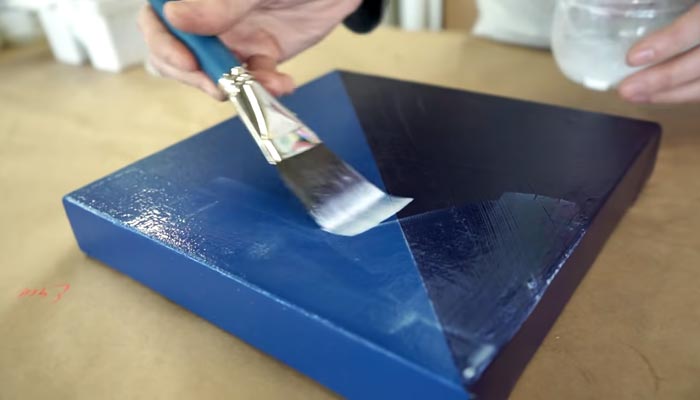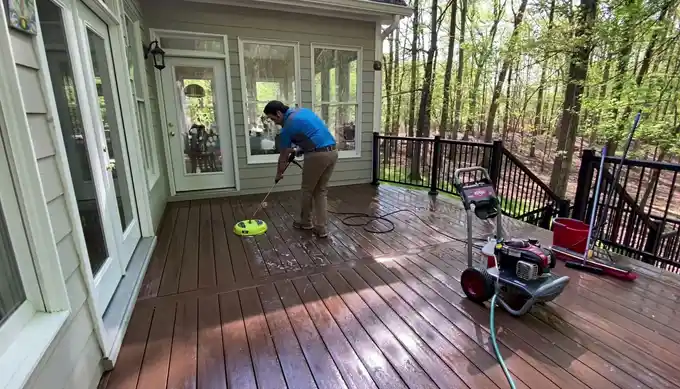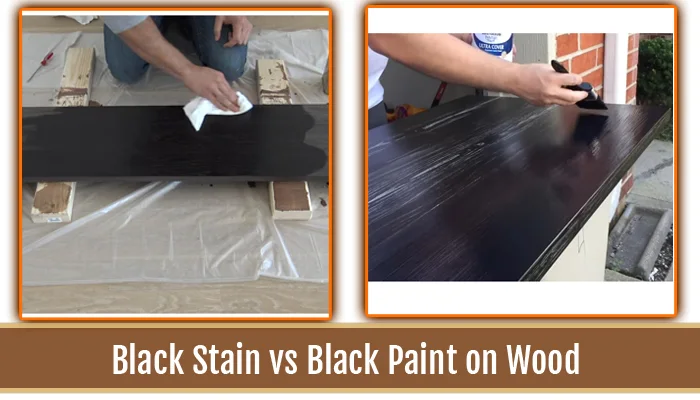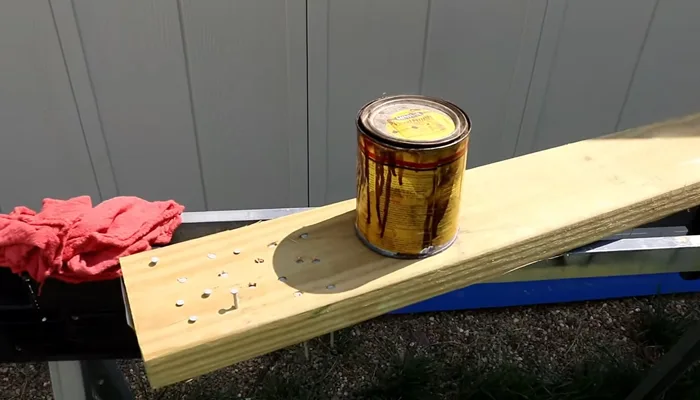WoodenuKnow.com is a participant in the Amazon Services LLC Associates Program, an affiliate advertising program designed to provide a means for sites to earn advertising fees by advertising and linking to Amazon.com and may earn from qualifying purchases.
Did you ever feel concerned about how to protect your paintings from dust, dirt, smoke, etc.? When you paint a piece of furniture, do you ever worry about what to do once the paint starts to chip or peel?
Have you considered varnishing over your painted surface? If so, how can you varnish over paint? If this is possible, then which type of varnish is most suitable for varnishing over paint.
One of the first things worth considering when trying to determine if you can varnish over paint is whether or not your current surface has any dark colors or is made from some type of varnished wood material.
If this is the case, you’ll want to make sure that whatever clear coat you choose for your new clear coat will match these colors and materials as closely as possible for the result to look natural and seamless.
What is Varnish and What Does It Do?
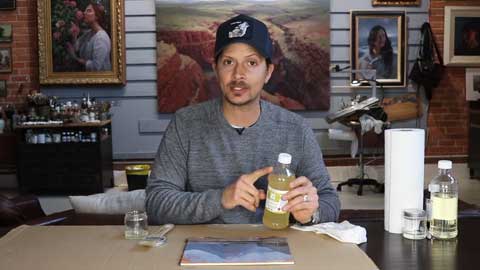
Varnish is a type of colored or clear coat (water or oil-based) typically applied over any surface to protect the surface from moisture, scratches, or any kind of damage.
It fills on the surface and creates a glossy protective finish, providing more protection. Varnishes can also be used on stairs, table surfaces, and other items to increase their resistance to wear and tear.
Can You Varnish Over Paint?

This is a question that often comes up for people looking to protect their painted surfaces. In general, the answer is yes, you can varnish over paint with acrylic-based varnish. However, there are several things to keep in mind when making this decision, such as:
Type of Varnish
There are both oil-based and water-based varnishes; each type of acrylic-based varnish has its advantages and disadvantages, so it is best to determine your needs before choosing which one you will use. There are various kinds of Varnish as like:
Lacquer
A clear, fast-drying, protective finish derived from nitrocellulose dissolved in organic solvents and sometimes combined with other chemicals. After drying, the resulting highly durable finish remains transparent and does not yellow or change paint color over time.
Polyurethane
This is a durable, elastic, moisture-proof finish. It can be used to protect tables and cabinets from water damage.
Water-based varnish
This is a good choice if you want a protective clear coat that will not yellow, crack or peel. It dries to a glossy finish and cleans up easily with soap and water.
Oil-based varnish
If you need a harsh, water-resistant clear coat, this is a good choice to protect wood-painted surfaces from scratches or other damage. However, oil-based varnish can yellow over time, taking longer to dry.
Polyurethane varnish
This offers an extra-durable, water-, oil- and alcohol-resistant clear coat for your painted furniture. Oil-based polyurethane varnish is easy to clean with soap and water if any dust or dirt gets on it.
Type of Paint
If you are painting in oil or latex, varnishing will likely be easy. However, if your surface is made of shiny material, such as metallic enamel paint or lacquer, it may not work to varnish over the top, this is because oil-based products tend to dissolve these types of surfaces.
Also, keep in mind that some oil-based paints or water-based paints do not work with water-based products, so if your surface is made from a material that does not work well with either type of varnish, then you will need to choose something else. There are two types of paint:
Water-Based Paint (acrylic paint or latex paint)
Latex and acrylic paints are water-based, so you can varnish over latex paint if desired. You can also use a combination of products on top of your latex paint, for example; you could apply a sealer before the varnish to help it work more effectively.
Oil Based Paint
Oil-based paints are another option. Oil-based paints can build up oil on your surface over time. This might be desirable if you want to create a shiny high gloss paint or highly protective clear coat, but it will also make future maintenance more difficult.
Effects of Varnish
Remember that varnishes can change the look of a surface, for example, water-based varnish can sometimes cause the paint underneath to appear lighter than your current surface color/texture.
Transparency
The amount of transparency you desire in the final product is also a factor when choosing which type of varnish to use over oil paint.
While most varnishes are fairly clear, the amount of pigment that is added to each product does affect how much light can pass through it.
How to Apply The Varnish to Your Surface?
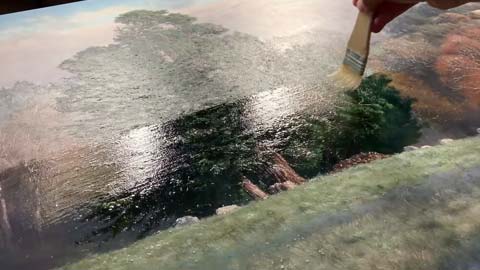
To apply a varnish, you will need to follow some steps start by:
Step 01. Cleaning the Surface
Before adding any type of finish, you should clean your surface. This will help ensure that the new product has something to adhere to.
Step 02. Applying a Primer
If you are using an oil-based or water-based primer, applying it first may help the varnish bond better with your base paint.
Step 03. Applying the Varnish
Once your primer has dried, apply the varnish evenly using a brush or roller. Once the varnish has dried, you can start using it.
Step 04. Drying Time
Varnishes can take up to 24 hours to completely dry. The thicker you apply the varnish, the longer it will take to dry.
Which Type of Varnish Should You Use for Your Project
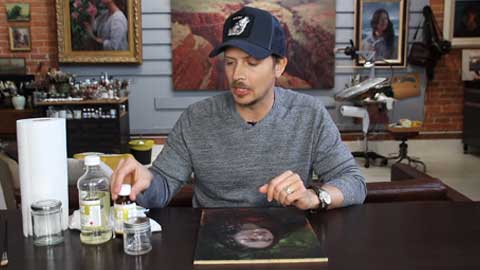
There are a few different types of varnish to choose from, and the type you use will depend on the surface you are painting, the kind of paint you are using, and the desired effect.
Water-based varnish is a good choice if you want a protective clear coat that will not yellow, crack or peel. It dries to a glossy finish and cleans up easily with soap and water.
Oil-based varnish is a good choice if you need a harsh, water-resistant clear coat to protect wood surfaces from scratches or other damage. However, oil-based varnish can yellow over time, taking longer to dry.
Polyurethane varnish offers an extra-durable, water-, oil- and alcohol-resistant clear coat. It is compatible with latex paint if desired.
The Effects of Varnishing Your Surface
Many homeowners use varnish to increase the life of their painted or stained surfaces. While varnish will protect your project, it can also alter the appearance of your product; this is especially true if you choose to use different types of varnish.
For example, using an oil-based product over Latex Paint will change the appearance of your surface because oil-based products tend to have a shiny, wet look compared to water-based products, which are cleaner looking.
Many people prefer this shiny, wet look, but it is essential to keep this in mind if you are trying to keep your final product aesthetically similar to an original. If the type of varnish you choose does not work well with either type of paint or stain, then you will need to pick something else.
Varnishing Tips and Tricks over Paint
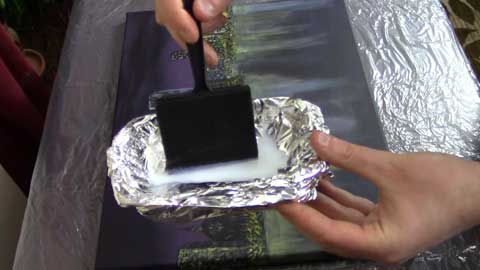
These are the general tips to ensure you are using varnish correctly:
01. Always read the instructions on your varnish product carefully.
02. Make sure you are using the correct type of varnish for your project.
03. Always prime the surface before applying varnish over oil-based paint.
04. Apply one or two coats of varnish instead of one thick layer. This will allow the product to dry more evenly and prevent damage or cracks in your final finish.
05. Always allow your varnish to dry completely before applying another clear coat or cleaning the surface.
06. It is a good idea to sand between each layer of varnish you apply. This will ensure a smoother and more even finished product.
07. Let professional painters handle larger projects.
FAQs
The following are some frequently asked questions that may be helpful to you:
01. What Happens If You Put Varnish on Oil Paint?
Putting varnish on oil paint will change the look of your final product. It can protect your artwork from moisture and scratches. In time, removing that varnish can give the color a new appearance.
02. Can You Varnish Over White Paint?
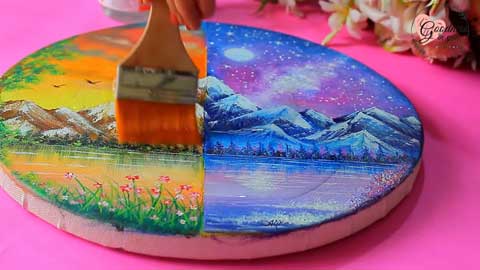
Yes, you can varnish over white paint. Some people choose to do this for a brighter look, but for the white furniture, you should avoid varnish.
03. Do I Need to Prime the Surface Before I Apply Oil-based Varnish?
If you plan to varnish over the stain, it’s a good idea to sand and prime the surface by using an oil-based primer and then allow this to dry ultimately before applying your clear varnish.
04. What is The Best Way to Finish Gloss Paint?
Perhaps the easiest way to finish gloss paint is sanding between each layer of varnish you apply. This will ensure a smoother and more even finished product.
05. What Can I Use Over Gloss Paint?
Once you have sanded and prepared the surface, you can apply oil-based, water-based latex, acrylic, or any other type of paint over the gloss paint.
06. Differences between Acrylic Paint and Latex Paint?
Acrylic paint is different than latex paint because they are not compatible. Acrylic paint dries quickly and does not require many layers. The surface is easy to apply, unlike Latex paint which requires more layers.
07. Why Do Acrylic Paints Need Polyurethane?
Acrylic paints need an oil-based polyurethane to protect the acrylic painting from ultraviolet rays. This will also help with the surface luster.
08. Can You Apply Clear Varnish over Completely Dry Acrylic Paint?
It is good to apply clear varnish over completely dry acrylic paint. A clear varnish must be applied to acrylic paint before they can be displayed. By varnishing the painting, you can prevent the accumulation of dust, ultraviolet rays, and yellowing.
09. Can You Put a Clear Coat Over Painted Wood?
You can put a clear coat over painted, stained wood, but you must sand the surface first. If you don’t, the varnish may soak into the paint and create tiny bubbles which can’t be removed without sanding or chipping off some of the paint.
10. How Long Does It Take For Paint to Dry Before Polyurethane?
It takes about 24-72 hours for the paint to not just dry but cures before applying polyurethane can be applied.
Conclusion
Varnish is a protective layer that you can apply over paint and other surfaces. It protects the surface from moisture, scratches, and UV rays. There are many different types of varnishes, with each having its benefits for specific projects.
Having some important knowledge about how can you varnish over paint will help you to achieve the desired result. In addition, you need to understand what you are doing before applying varnish to your color.

